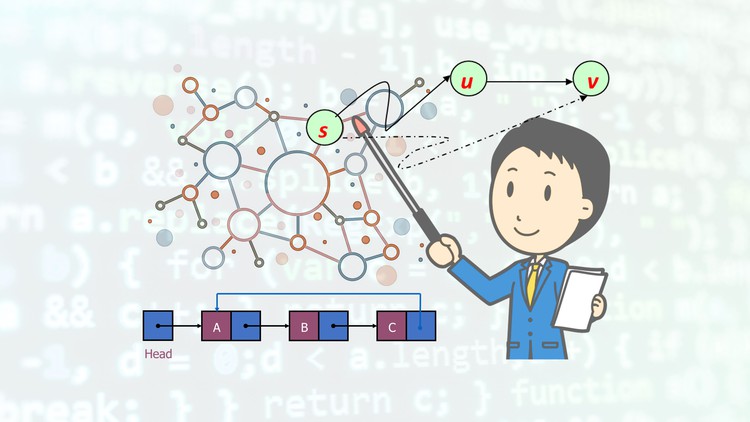
strings, arrays, linked-list, stacks, queues, recursion, trees, binary search trees, graphs, searching, sorting
What you will learn
Demonstrate knowledge of the concepts of data structures, logical structure and storage structure of data and their basic operation.
Demonstrate ability to solve practical problems using suitable data structures and methods.
Master the design and analysis methods of searching and sorting algorithm.
Learn full concepts of strings, arrays, linked-list, stacks, queues, recursion, trees, binary search trees, graphs, and many more.
Description
Data Structures is indeed an essential course for students in the field of data science, computer science, or related backgrounds. It provides a strong foundation in understanding core concepts and techniques necessary for writing high-quality programs and developing efficient algorithms. Here are the key topics covered in a typical Data Structures course:
‘;
}});
- Logical and Storage Structure of Data: Students learn about the logical organization of data and how it is stored in computer memory. They understand the difference between abstract data types (ADTs) and their physical implementations.
- Basic Operations: Students gain knowledge about the fundamental operations performed on data structures, such as insertion, deletion, traversal, searching, and sorting.
- Arrays: Students explore the concepts of arrays, including one-dimensional and multi-dimensional arrays. They learn how to manipulate and access array elements efficiently.
- Linked Lists: Students understand the linked list data structure, which consists of nodes connected through pointers. They learn about various types of linked lists like singly linked lists, doubly linked lists, and circular linked lists.
- Stacks and Queues: Students learn about stack and queue data structures, which are used for managing data in a Last-In-First-Out (LIFO) and First-In-First-Out (FIFO) manner, respectively. They understand the operations and applications of stacks and queues.
- Recursion: Students gain an understanding of recursion, a technique where a function calls itself. They learn how to write recursive algorithms and solve problems using recursion.
- Trees: Students explore tree data structures, including binary trees, binary search trees (BSTs), and balanced binary search trees like AVL trees and red-black trees. They learn about tree traversal algorithms, such as in-order, pre-order, and post-order traversal.
- Graphs: Students learn about graph data structures and their representations (e.g., adjacency matrix, adjacency list). They study graph traversal algorithms like breadth-first search (BFS) and depth-first search (DFS).
- Sorting Algorithms: Students gain knowledge about various sorting algorithms, including sequential sort, bubble sort, insertion sort, merge sort, and quicksort. They learn about the time and space complexity of each algorithm and their applications.
- Searching Algorithms: Students learn about searching algorithms like sequential search and binary search. They understand the principles behind these algorithms and their efficiency.
- Shortest Path Algorithms: Students explore algorithms used to find the shortest path in a graph, such as Dijkstra’s algorithm and Bellman-Ford algorithm. They learn about their applications in route planning and network optimization.
By studying these topics and mastering the concepts and techniques involved, students will develop the skills to design efficient algorithms, solve practical problems using appropriate data structures, and analyze the performance of algorithms. This knowledge is crucial for software development in data science and related fields, as it provides a strong foundation for developing robust and efficient programs.
